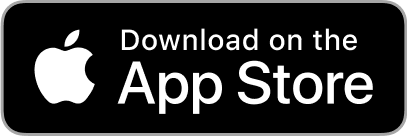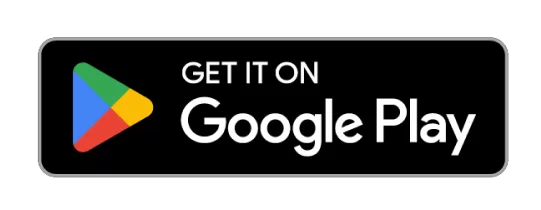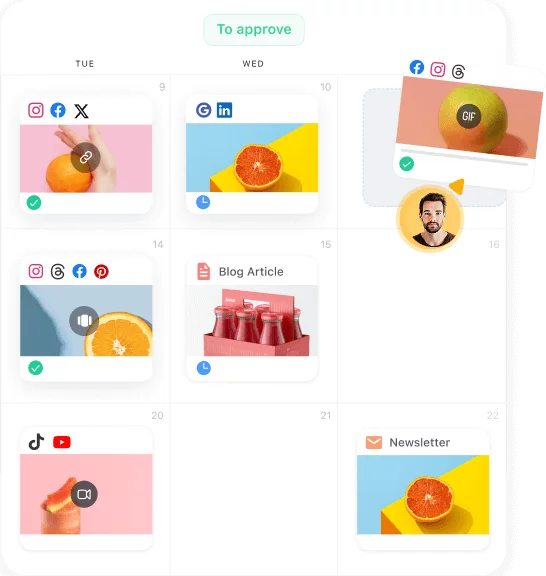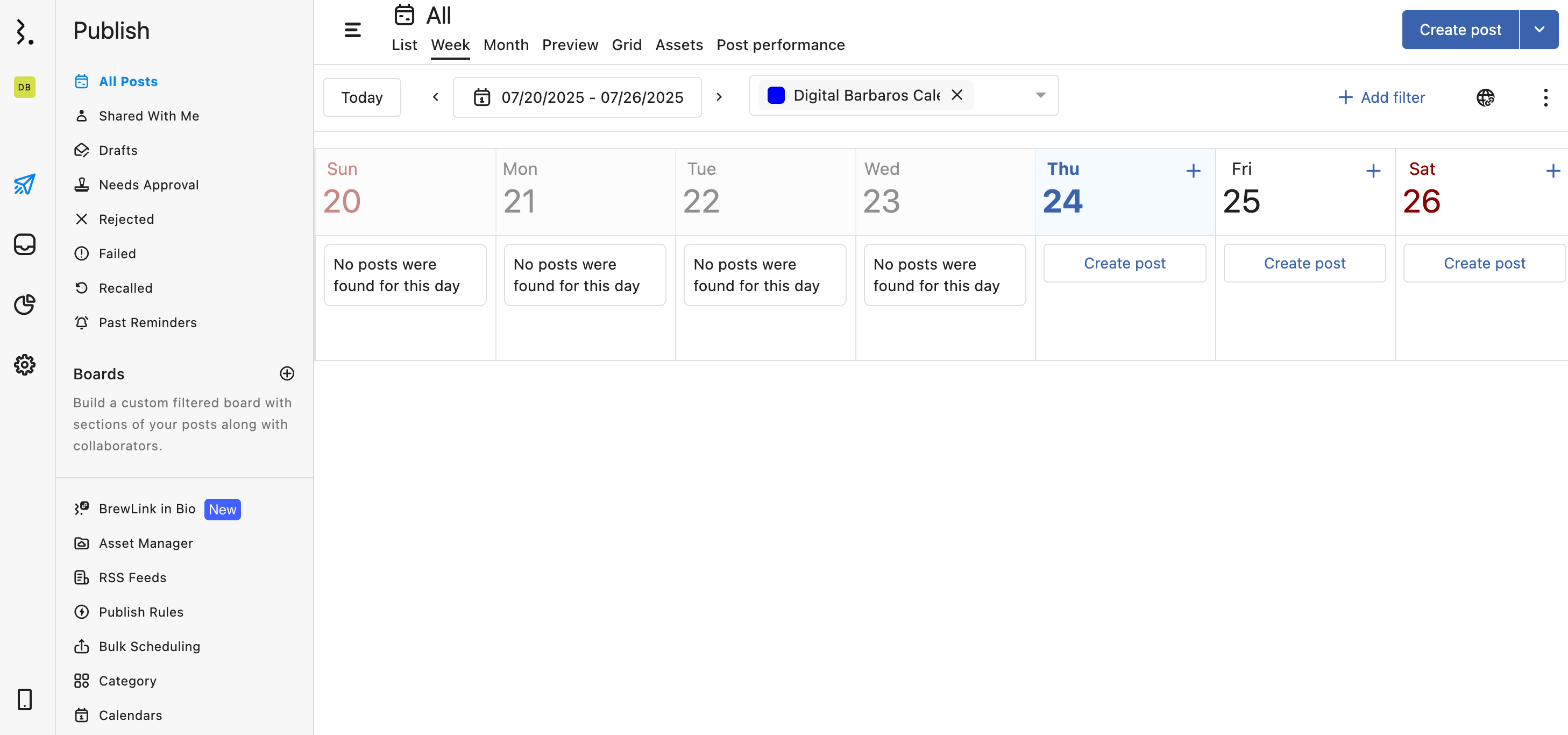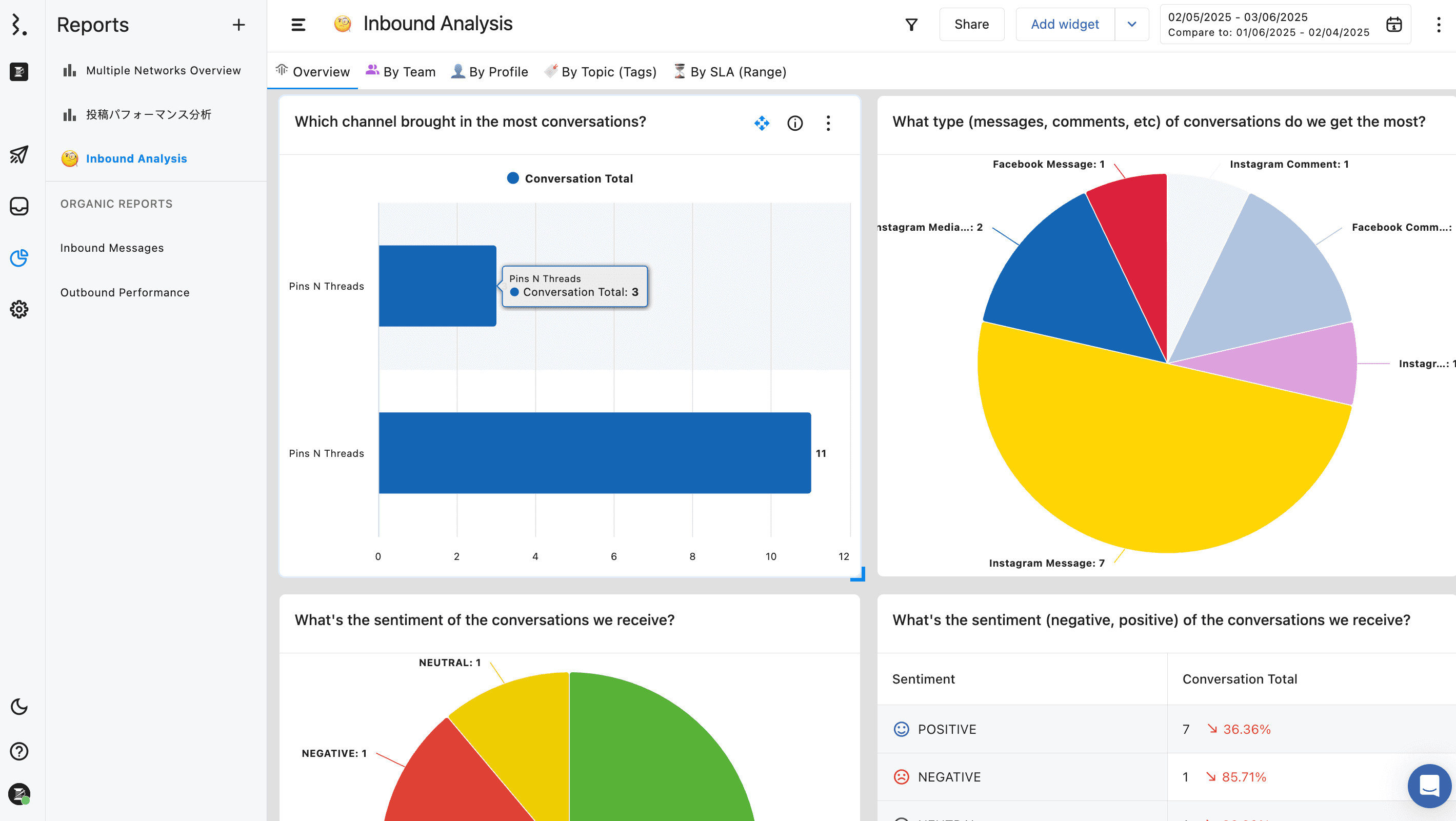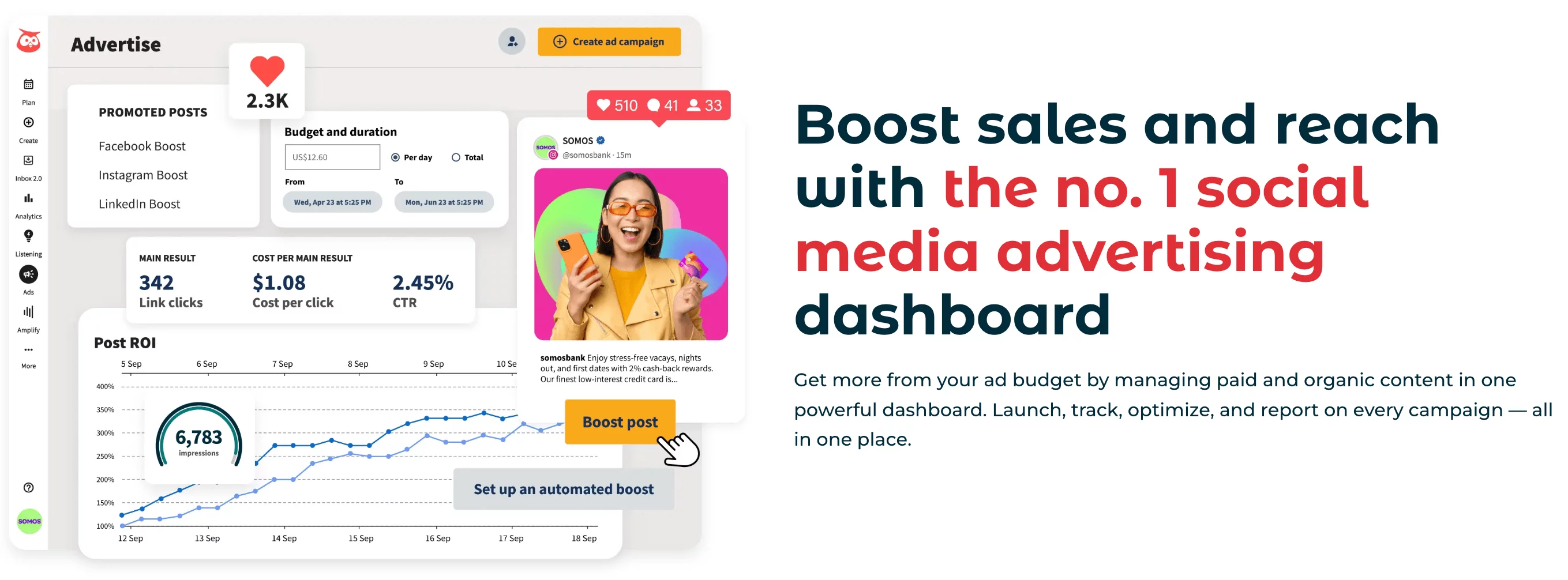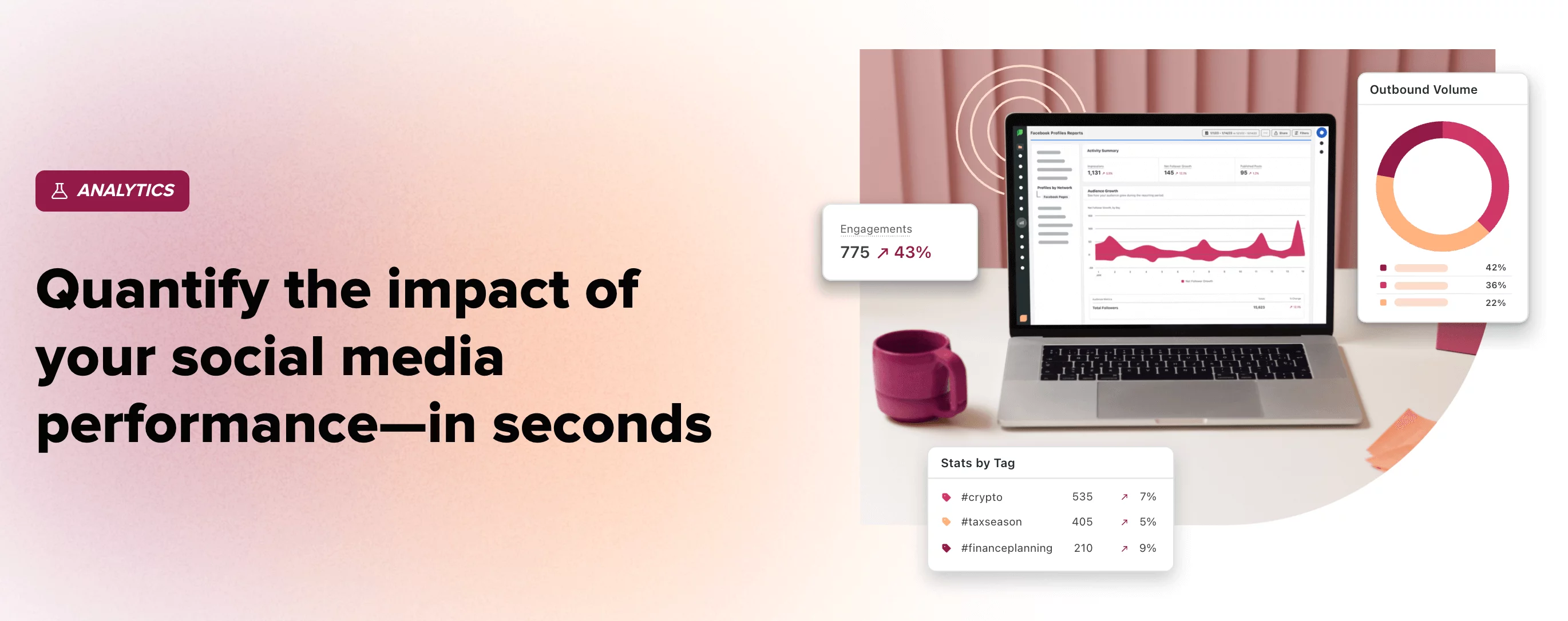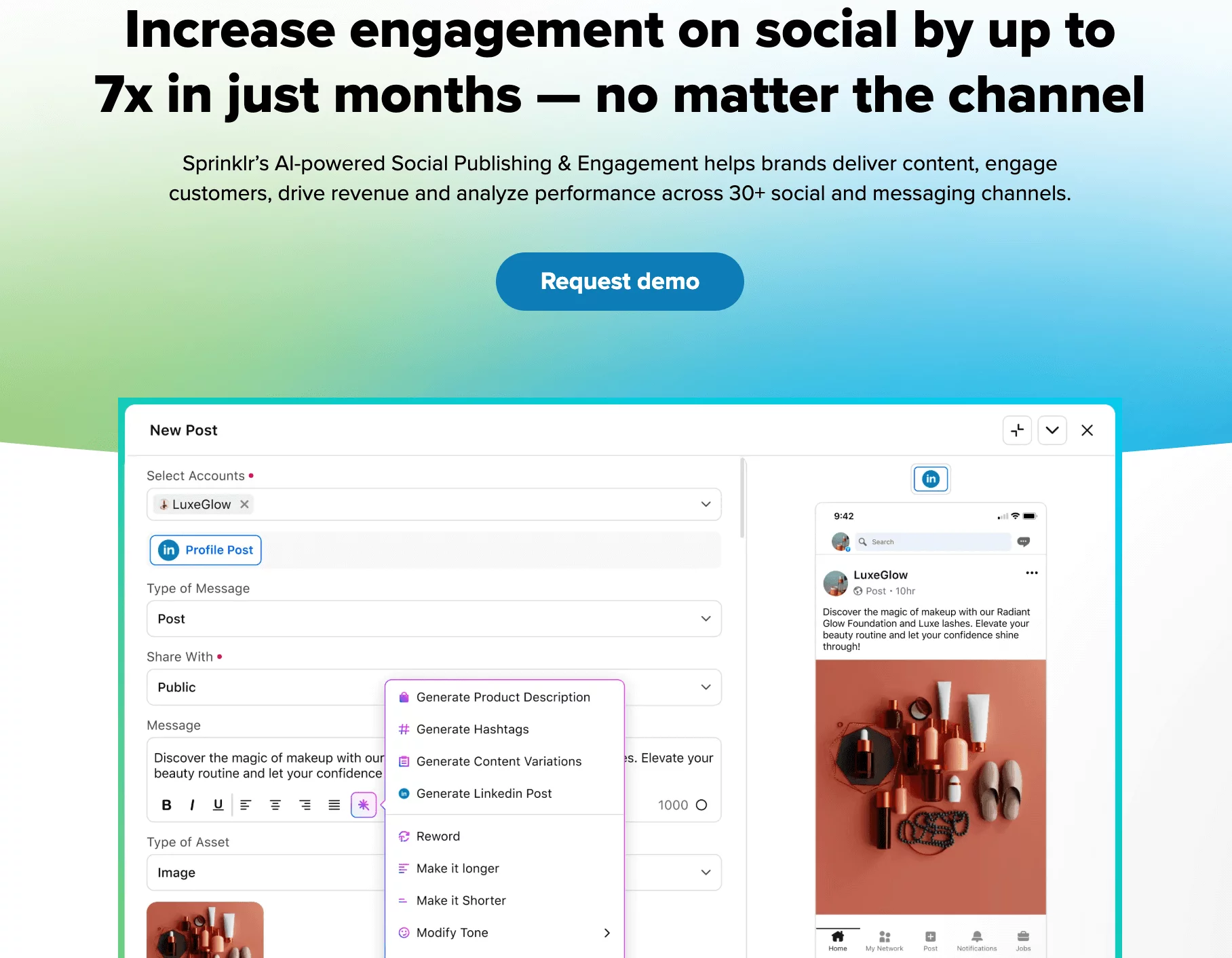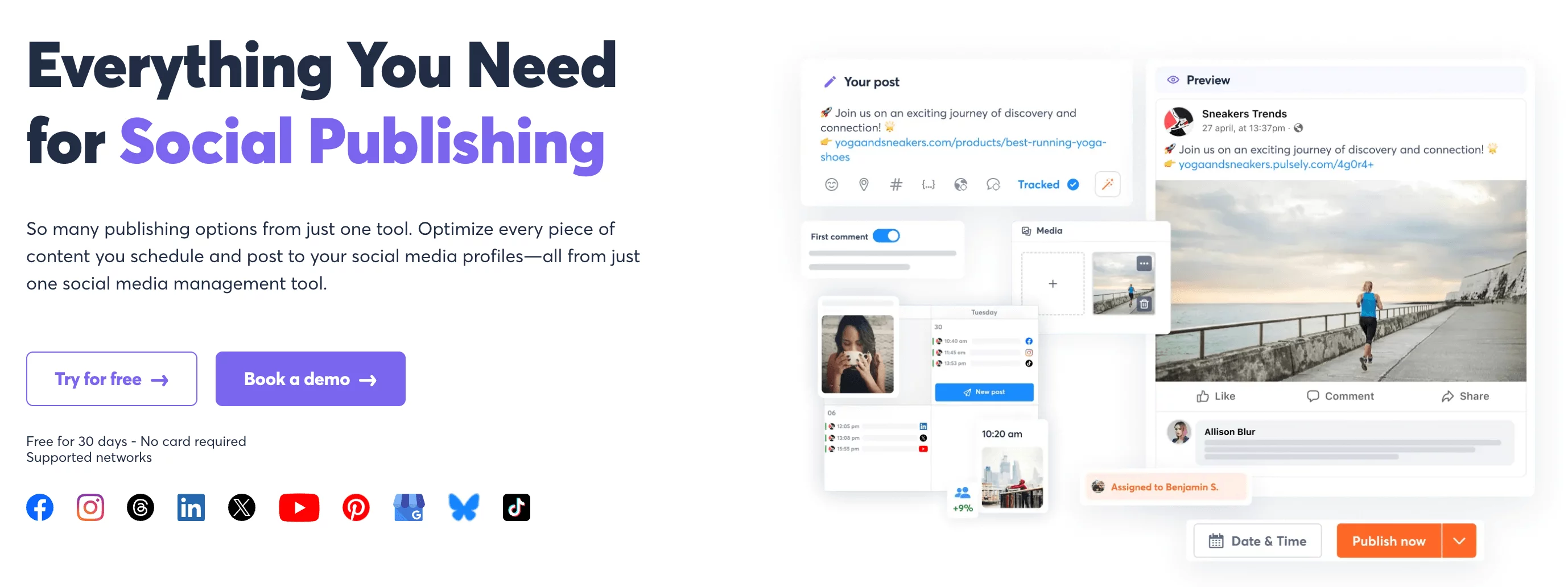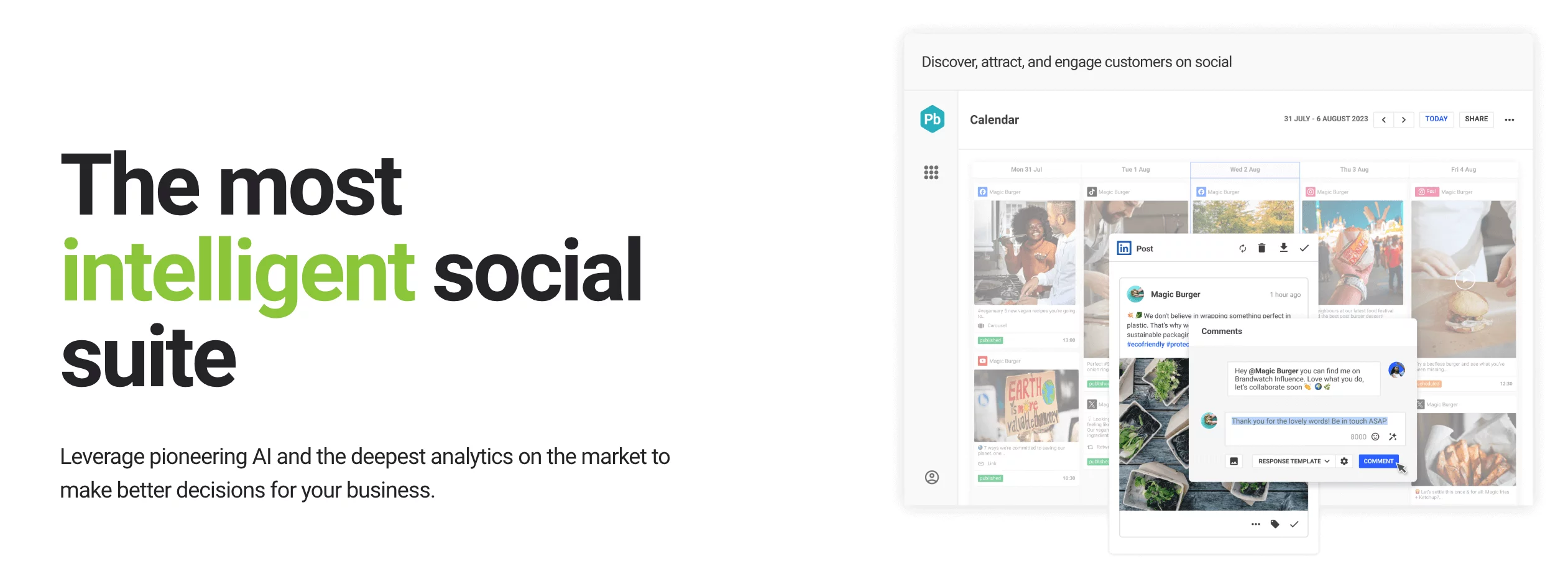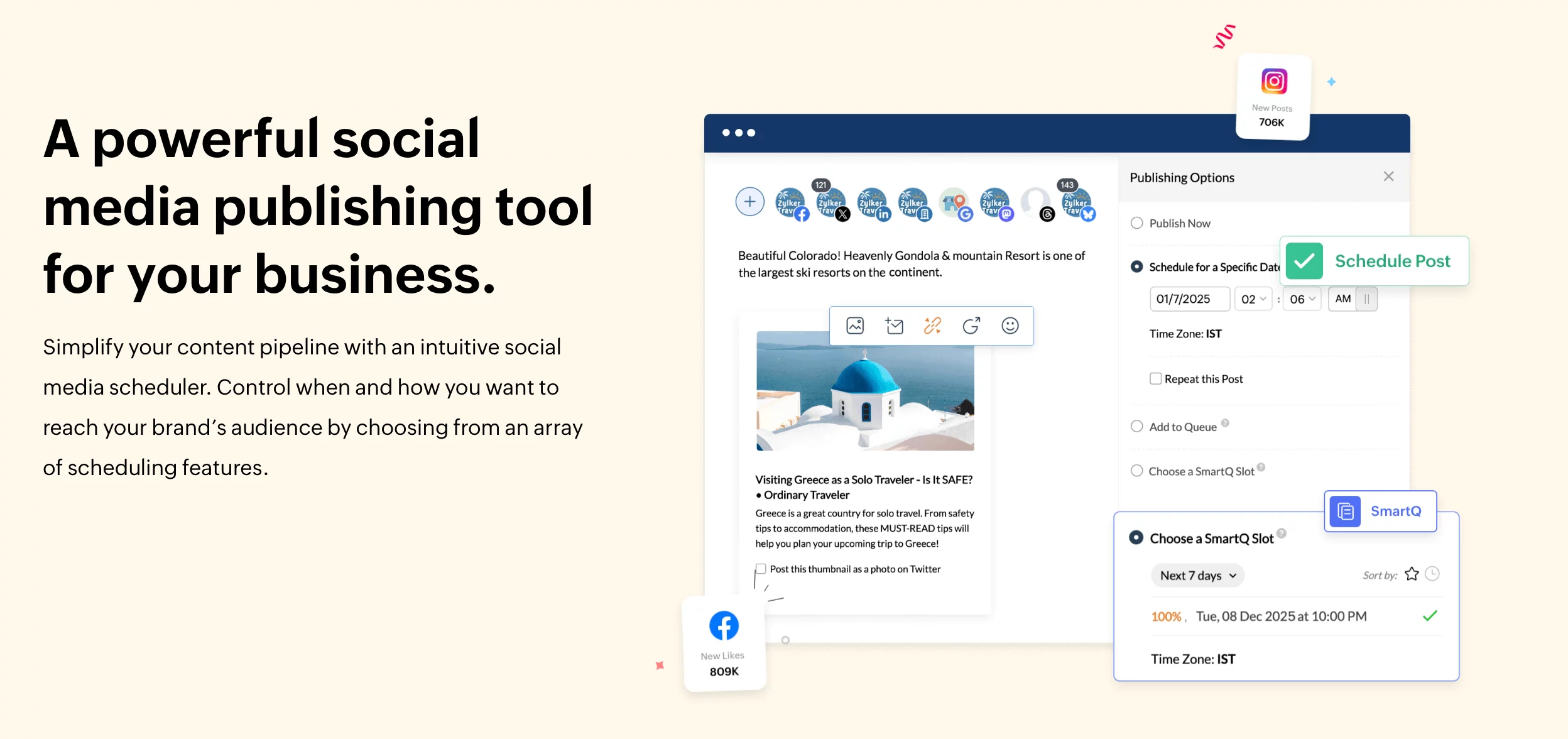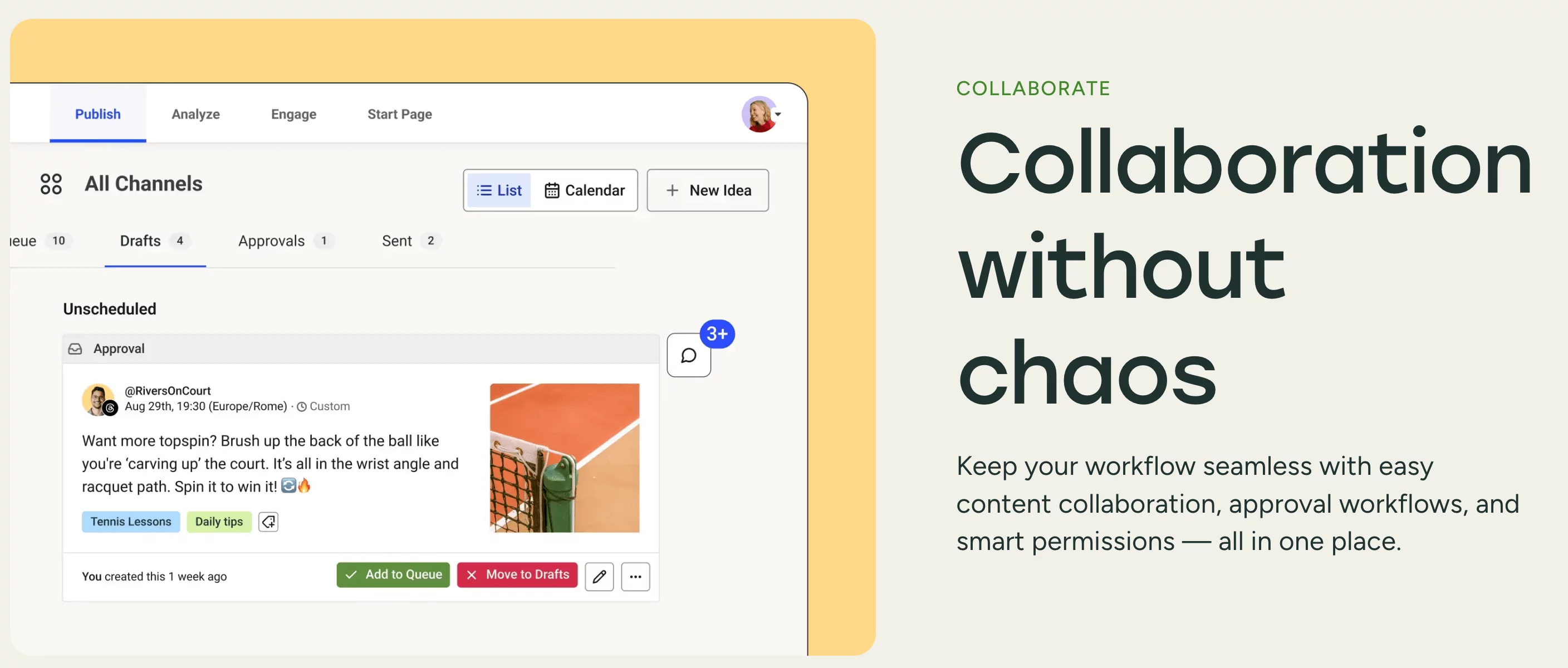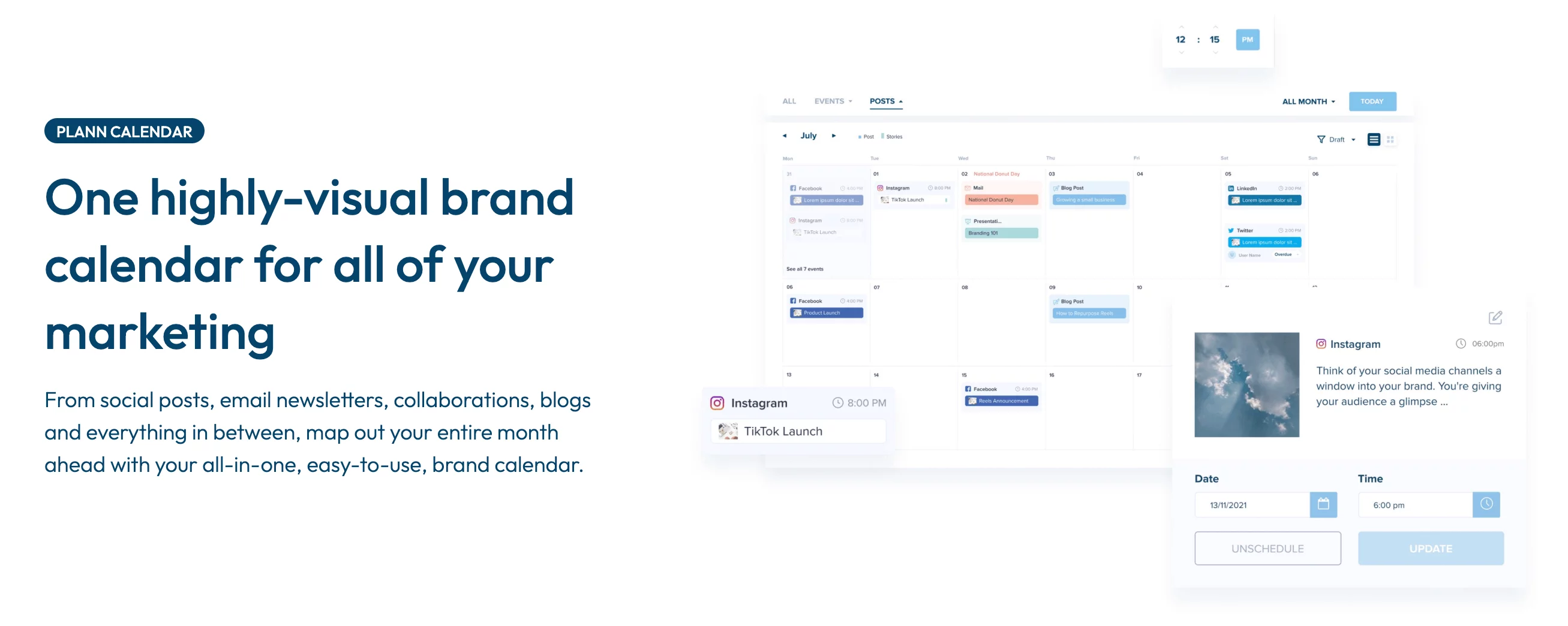For years, marketers fed the Content Monster with nonstop posts. Big names said volume won, so we treated visibility like a numbers game. That playbook’s outdated. Engagement now hinges on quality and clear relevance. According to the GWI study for the Financial...
Top 9 Statusbrew alternatives to try
9 best Statusbrew alternatives for content collaboration in 2026

Statusbrew is a strong social media and content collaboration tool, but it does have its setbacks. Users looking for Statusbrew alternatives mention that the learning curve is steep, the mobile app can be clunky, analytics lack flexibility, and setup takes time.
Although it covers basic scheduling features, Statusbrew may fall short if your team needs smart automation, improved planning, or faster customer feedback.
So here are 9 tools that can be strong Statusbrew alternatives for teams of all shapes and sizes. Let’s go!
Why you should consider a Statusbrew alternative
Statusbrew is a well-known social media management tool offering planning, scheduling, cross-channel posting, approval workflow, and reporting solutions. Users praise its unified inbox, responsive support, and a flexible rule engine for content moderation.
But Statusbrew may not be a perfect fit for everyone.
Plenty of other social media management tools offer similar features, and some Statusbrew alternatives might suit your workflow or budget better.
Calendar and views
With Statusbrew, you can schedule social media posts for multiple platforms, including Facebook, Instagram, X, LinkedIn, YouTube, TikTok, Pinterest, and Google Business Profile.
The platform has multiple content views: list, week, month, and grid. You can also preview your posts and get an overview of your assets. All of your scheduled content sits neatly in a calendar.
G2 reviews mention that although the basic scheduling features are there, Statusbrew has its hiccups with queued messages. Users mention that it would be nice if deleting a queued message on one platform would also delete it on other platforms, rather than having to do so manually.
Collaboration and approvals
Social media teams can set up intuitive custom content approval workflows to get customer feedback faster in Statusbrew.
On the flip side, like many team collaboration features in Statusbrew, approval workflows are exclusive to Premium+ plans, making the platform lose points in the affordable pricing category.
Content creation
Statusbrew’s composer allows you to crop images and videos, add text overlays, and apply filters. If you are a Premium+ subscriber, you can also use AI Assistant to polish your copy.
This basic set of editing instruments is enough for most users. Yet, when it comes to the more advanced features the platform offers, like adding trending music to scheduled Instagram Stories, users mention that they are not really intuitive. This adds unnecessary steps and time to the editing stage.
Reporting and analytics
Statusbrew offers custom report dashboards with ready‑made templates and widgets. Reporting covers sentiment analysis, follower trends, and ad metrics.
On the downside, most of the reporting tools are only available for Standard+ subscribers, and users mention they’d like to see more analytics customization options.
That said, this isn’t an area where the platform shines, with most alternatives to Statusbrew providing deeper insights and reporting.
Pricing:
Statusbrew has five paid plans:
- Lite for $69.00/month (1 user)
- Standard for $129.00/month (5 users)
- Premium for $229.00/month (8 users and most features)
- Agency for $49/month per client
- Enterprise for a custom price
Also, it has a 14-day trial period and no free plan.
Final Statusbrew takeaway
Statusbrew is a solid social media management tool that makes managing multiple platforms easier. However, many features are only available in higher tiers. Smaller businesses may find Statusbrew too expensive for their needs.
What to look for in a Statusbrew alternative
Finding the right social media management tool can make a huge difference in how smoothly you handle your social media content creation.
Here’s what to look for in a Statusbrew alternative:
- Real-time team collaboration. Speed up work with in-context comments, feedback, and version control.
- Flexible approval workflows. Keep content moving with clear, built-in review steps and customizable workflows.
- Pixel-perfect previews. See exactly how posts will look before they go live.
- Platform coverage. Make sure all your current and future channels are supported.
- Support universal content. Your brand’s strategy may include blogs, newsletters, or internal content.
- Reliable mobile app. Never miss a beat with content creation and review on the go.
- Intuitive UI. Look for a clean tool that doesn’t come with a huge learning curve. The simpler, the better.
Statusbrew ticks several of these boxes, like good platform coverage and intuitive UI. However, despite the interface’s cleanliness, it may take some time for new users to get used to all of its capabilities.
9 Statusbrew alternatives to consider in 2025
Whether you’ve decided to leave Statusbrew in the rearview mirror or you’re just window shopping before making a final decision, here are 9 tried and tested social media tools for any team:
1. Planable: best for content collaboration across 9 platforms
Planable is a social media management tool for agencies who live inside calendars, juggle multiple brands, and want frictionless collaboration.
With Planable, you can forget about tool hopping and a gazillion email chains. The platform brings approvals processes, feedback, content creation, analytics, and scheduling to one user-friendly interface, allowing users to save time and effort.
Planable is the right alternative for fast and furious content teams. Here’s why:
Calendar and views
Unlike basic content calendar tools that offer just one view, Planable gives you 4 ways to see your content: calendar, list, feed, and grid.
Whether you want a bird’s-eye view or a focused window, Planable’s got you. In the calendar view, you can color-code all your posts and filter them by labels to easily spot content gaps and look for particular campaigns.
And if you want to reschedule posts, just drag and drop them across the calendar.
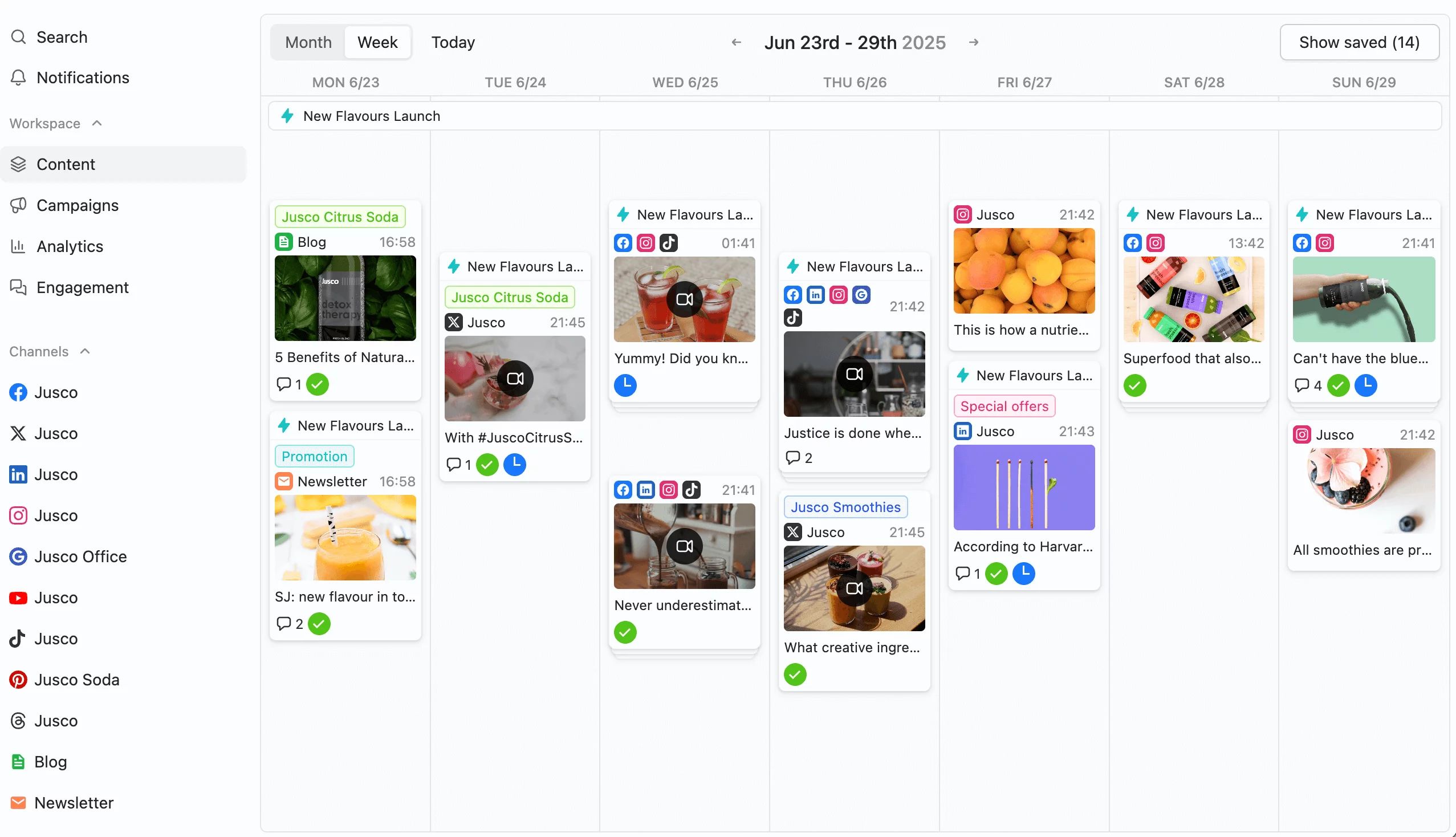
Organize campaigns visually with Planable’s weekly content calendar supporting multiple platforms and post formats.
If you manage multiple clients, Planable allows you to set up dedicated workspaces for each brand so that everything is neatly organized and nothing gets mixed up.
You can also share a guest view link with clients or stakeholders to give them a quick overview of their content plan. They can see posts and give feedback without needing to log in.
The platform features a clean, visual interface that’s beginner-friendly. There’s virtually no learning curve with Planable, so you can skip the frustration and focus on content planning and delivering better results, exactly as it should be.
Collaboration and approvals
Exchanging feedback in Planable is snapping fast. Drop real‑time comments and annotations, leave private notes for teammates, and get notifications when posts need your attention.
Done implementing feedback from a comment? Resolve it, as if it were a task.
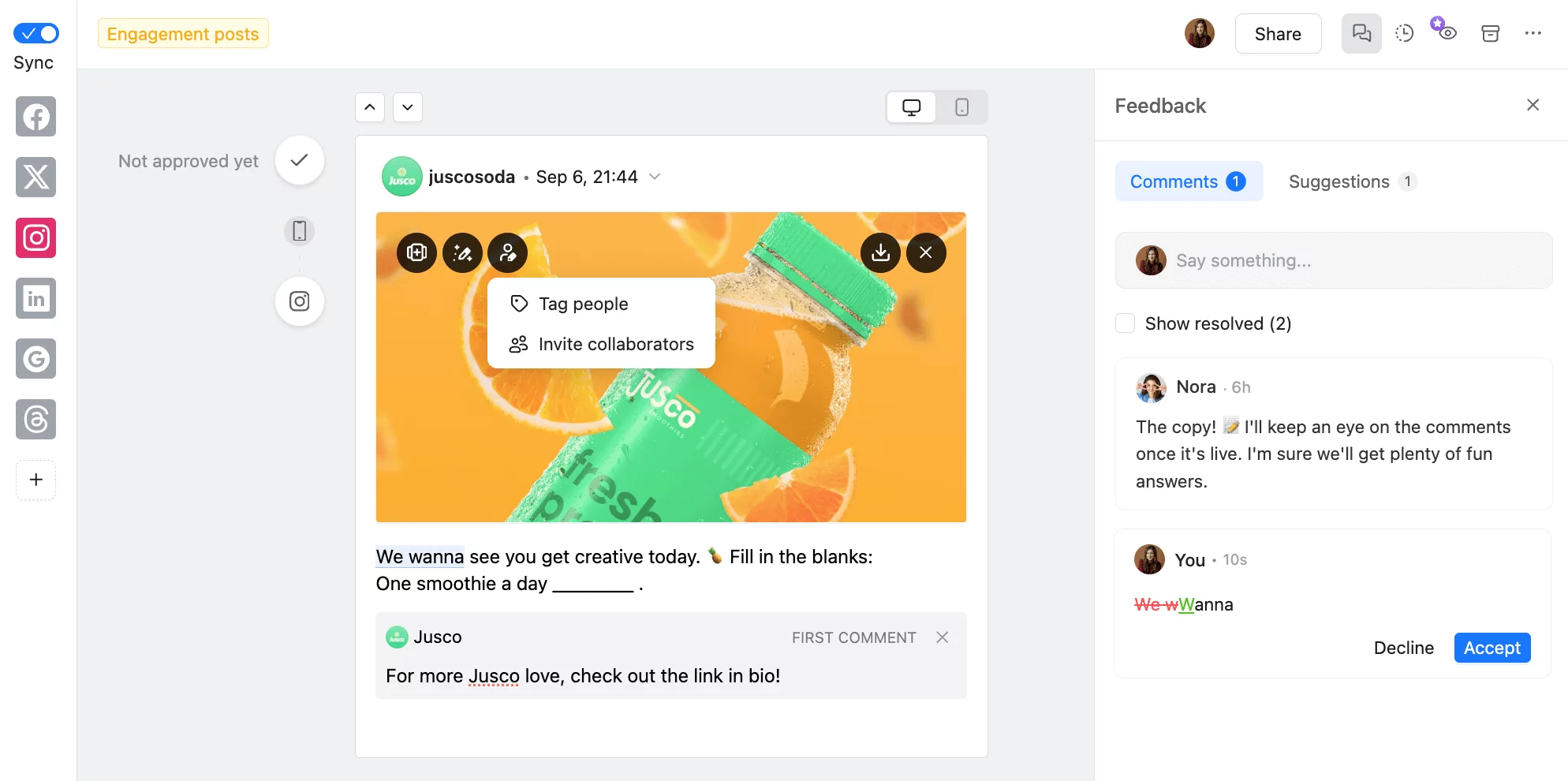
Collaborate efficiently with Planable’s built-in feedback system for reviewing and approving Instagram posts.
Approvals are customizable, too. Set up optional, required, or multi‑step approval flows depending on your setup to make client-facing processes smoother.
You can also create, edit, approve, and schedule posts from your phone using the mobile app (ioS and Android) — perfect for quick turnarounds.
Content creation
Planable’s Universal Content feature helps you manage content beyond social media posts. Create and collaborate on articles, press releases, emails, and scripts.
You can also import designs from Canva and edit visuals right in the app. Bulk upload helps speed things up when you’ve got a lot to publish.
And if you ever feel stuck, use Planable’s built-in AI tools to write or improve captions, generate replies, write scripts, and choose hashtags.
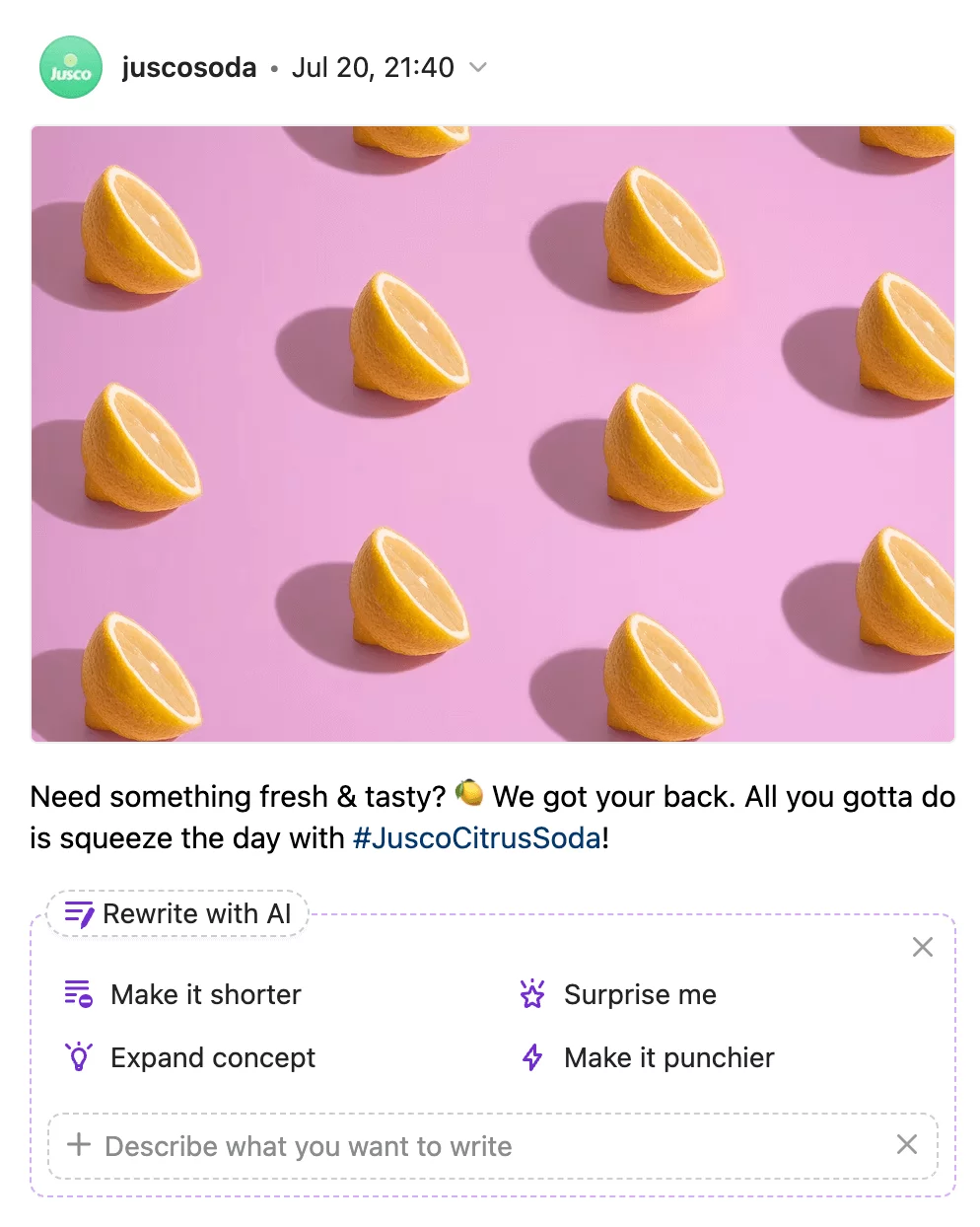
Enhance your social copy using Planable’s AI-powered tools to rewrite, shorten, or rephrase post content effortlessly.
Everything’s built to feel intuitive, so you can stay focused on the creative work, not learning a new system.
Reporting and analytics
Looking for engagement patterns in your content? Planable’s reporting tools make it easy to see what’s working.
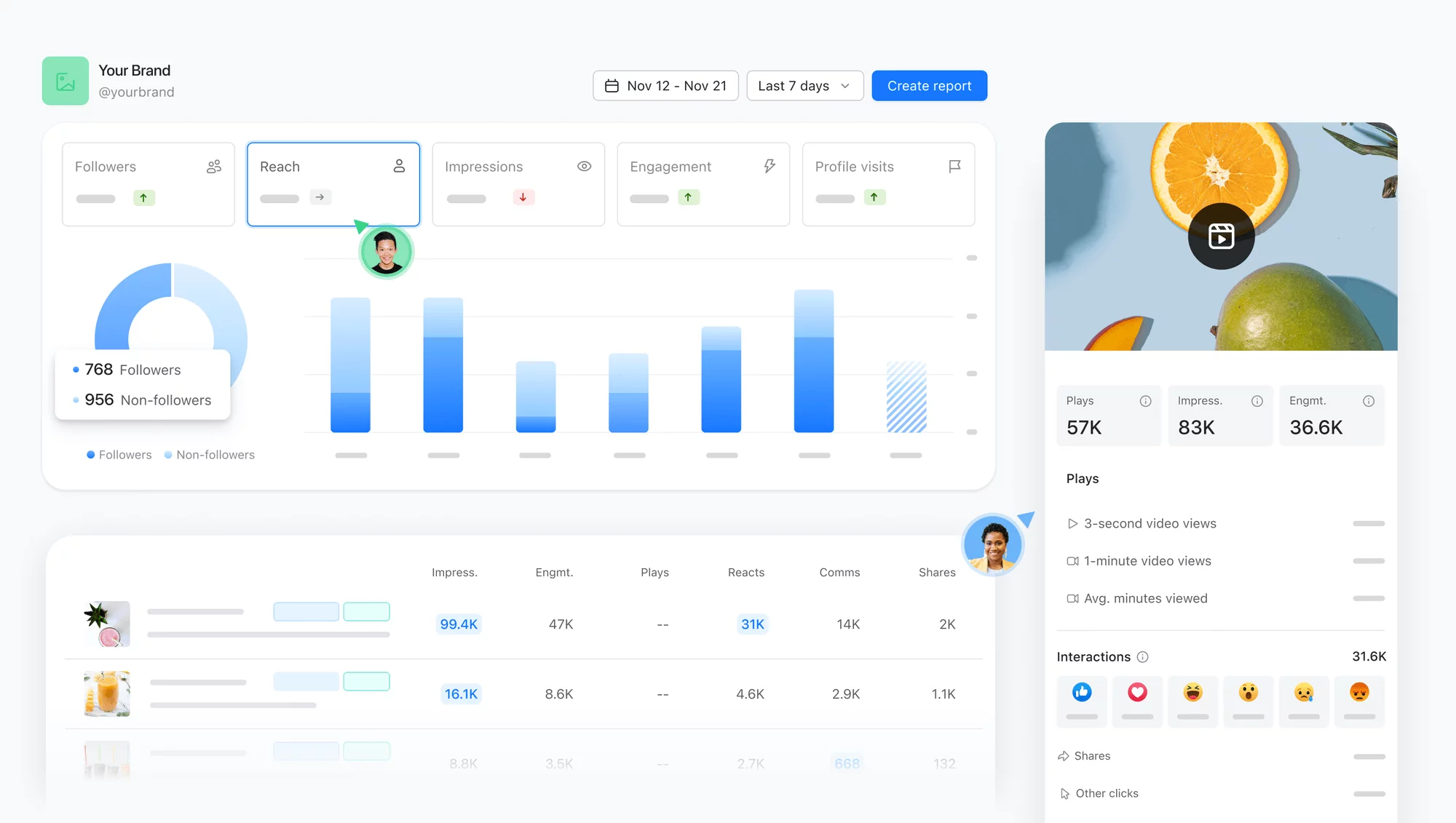
Gain insights into audience behavior with Planable’s analytics dashboard tracking reach, engagement, and impressions.
Track campaigns, spot top posts, and generate and share reports with clients via a simple link. No fluff, just clean, useful insights for social media teams who need to back up their decisions with data.
Pricing: Planable offers budget-friendly pricing starting at $33 per workspace/month, with custom pricing and discounts for 5+ workspaces. There’s also a free plan for small teams.
Drawbacks: Planable has no social listening tools and can’t publish to CMS.
Planable vs Statusbrew
- Both Planable and Statusbrew support major social platforms. Planable also includes Threads.
- Planable’s Universal Content supports long-form content. Statusbrew focuses on social posts only.
- Planable includes real-time comments and custom approval flows. Statusbrew limits collaboration to higher tiers.
- Planable’s workspace pricing is more flexible than Statusbrew’s per-user model.
2. Hootsuite: best for managing social media & ads in one place
Hootsuite helps with publishing, engagement, and reporting. It’s a solid choice for teams managing social media posts across major platforms and tracking engagement patterns.
Key features:
- Content management. Plan and schedule posts across all major channels.
- Ad integration. Set up Meta ads and paid boosts inside the tool.
- Social listening. Track mentions, trends, and do sentiment analysis.
Pricing: Hootsuite has 3 paid plans that start at $99/month.
Drawbacks: The tool takes time to learn, and team collaboration features cost more. It’s also heavy on the eye.
Hootsuite vs Statusbrew
Despite being UI-clunky, Hootsuite is a great alternative to Statusbrew for teams who want ads, insights, and scheduling in one tool.
3. Sprout Social: best for complex data-driven businesses
Sprout Social has post scheduling, but truly shines with strong analytics, AI powerups, and clear reports. It’s the right tool for large businesses focused on fine-grained data.
Key features:
- Advanced reporting. Get detailed reports with AI‑powered insights to guide strategy.
- Social listening. Check brand mentions, track audience sentiment, and answer customer feedback.
- Workflow automation. Automate approvals and delegate routine processes to AI.
Pricing: Paid plans start at $199/month per user. There’s also a free 30-day trial period.
Drawbacks: Sprout Social is costly, and many premium features require an upgrade.
Sprout Social vs Statusbrew
Sprout Social is a heavy‑duty version of Statusbrew. This social media tool has more power and detail, making it an excellent Statusbrew alternative for big brands with bigger budgets.
4. Sprinklr: best for enterprise‑level social media processes
Sprinklr has a powerful AI that helps with content creation, compliance checks, and automating tasks.
It also offers tools for reputation management on multiple platforms.
Key features:
- Cross‑platform publishing. Post and manage activity across 30+ social and ad channels.
- Analytics. Track brand sentiment and study customer feedback with AI-driven insights.
- Advanced approvals. Send posts through strict approval chains and block non‑compliant content automatically.
Pricing: Sprinklr comes with a custom price.
Drawbacks: It’s too complex for small businesses.
Sprinklr vs Statusbrew
Sprinklr is a powerful tool for large teams with complex processes. If you’re a franchise business or a large agency with multiple clients, Sprinklr may be a good alternative.
5. Agorapulse: best budget-friendly alternative to Statusbrew
Agorapulse is a smart social media management tool and one of the top Statusbrew alternatives to check out. It offers many of the same features but with a more intuitive interface and flexible pricing.
Key features:
- Unified inbox. Gather all customer feedback and messages in one place.
- Advocacy and UGC. Set up advocate posts and curate user‑generated content.
- Listening and reports. Protect your online reputation and create custom branding reports for clients.
Pricing: Agorapulse’s 4 paid plans start at $99/month per seat. There’s also a free plan with scheduling and basic reporting.
Drawbacks: Collaboration features are only included in Professional+ plans.
Agorapulse vs Statusbrew
Agorapulse is one of the few cheap and possibly even free alternatives to Statusbrew. It’s a practical choice for teams who need power on a budget.
6. Brandwatch: best for PR & reputation management
Brandwatch offers post scheduling, but shines at trend tracking and reputation management. It suits businesses focused on PR, customer feedback, and shaping brand strategy with real data.
Key features:
- Social insights. Track brand mentions, audience sentiment, and benchmarks to guide decisions.
- Collaboration tools. Use a unified calendar, clear approval flows, and a shared content library.
- Smart inbox. Manage messages across major channels with automation and audience profiles.
Pricing: Custom pricing for each suite is available.
Drawbacks: Brandwatch is less intuitive and not as strong for everyday scheduling.
Brandwatch vs Statusbrew
Brandwatch is an excellent Statusbrew alternative for teams prioritizing insights and online reputation work.
7. Zoho Social: best for sales‑focused social marketing
Zoho Social is a great tool for small business owners who want to connect social media, marketing, and sales. It links with Zoho CRM, allowing users to track leads from social channels.
Key features:
- Publishing. Plan posts with queues, drag and drop content across the calendar, and bulk schedule posts.
- Monitoring. Track mentions, keywords, and user‑generated content.
- Collaboration. Set up approvals, discuss drafts, and define team roles.
Pricing: Zoho offers 3 paid plans from $15/month, with a free plan available.
Drawbacks: Most plans include only 1 user, so extra seats cost more.
Zoho Social vs Statusbrew
Zoho Social has a budget-friendly pricing, making it the right tool for small businesses. It’s also one of the best free alternatives to Statusbrew for teams needing a simple, powerful tool.
8. Buffer: best for small businesses that get things done
Buffer is one of the most user‑friendly tools out there. It doesn’t try to do everything, but for a small business owner, it covers what matters most: save time, plan posts, and see results.
Key features:
- Collaboration tools. Invite teammates, set up approvals, and assign roles.
- Ideas board. Collect content from Google Drive, Canva, or RSS feeds and save ideas on the go.
- Smart scheduling. Use AI-driven insights to post at the best times.
Pricing: Free plan available. Price for paid plans depends on the number of channels and starts at $5/month.
Drawbacks: Analytics are pretty basic.
Buffer vs Statusbrew
Buffer is a simple, budget‑friendly option for small teams who want to save time on social media but don’t want to invest in complex tools. It’s one of the top Statusbrew alternatives to consider if keeping costs low is high on your list.
9. Plann: best for small businesses focused on Instagram
If you’re an Instagram groupie, Plann is the right alternative to Statusbrew with very affordable pricing. It focuses on Instagram, but also supports scheduling to other channels.
Key features:
- Content calendar. Map out posts, use themes, and build long‑term brand plans.
- Post ideas. Use AI‑generated captions, templates, and ready‑to‑use visuals.
- Built-in editor. Edit images, crop, filter, and add overlays.
Pricing: Free plan for Instagram. Paid plans with other platforms start at $15/month.
Drawbacks: Analytics are only available for Instagram.
Plann vs Statusbrew
Plann has a more intuitive interface than Statusbrew. It’s a great tool for solo marketers or small teams executing social media strategies for Instagram.
How to choose the right Statusbrew alternative for your team
Ask yourself:
- What platforms do you publish to? Not all tools support the same mix.
- Do you need smart automation and approval flows or just basic scheduling?
- Are you managing only social posts or also blogs and newsletters?
- How big is your team, and how do you collaborate internally and with clients?
- Which pricing model fits you best — per-user or per-workspace?
Start by identifying where Statusbrew falls short, and weigh each tool’s strengths against the daily workflow.
Finding your ideal Statusbrew alternative
Statusbrew is a powerful tool, but many businesses look for alternatives because of pricing, features, or usability concerns.
If you are a growing team or an agency, you need something just as flexible as you are — like Planable. It’s easy to use, scale, and kickstart for both your team and clients.
Planable is your fix for crafting, collaborating on, and perfecting content on desktop and on mobile as a companion app. Get your 50 free posts and try Planable today!
